Art Fairs
8 Compelling Artists to Discover at the 2019 AIPAD Photography Show
The world's oldest photography fair is back in New York.
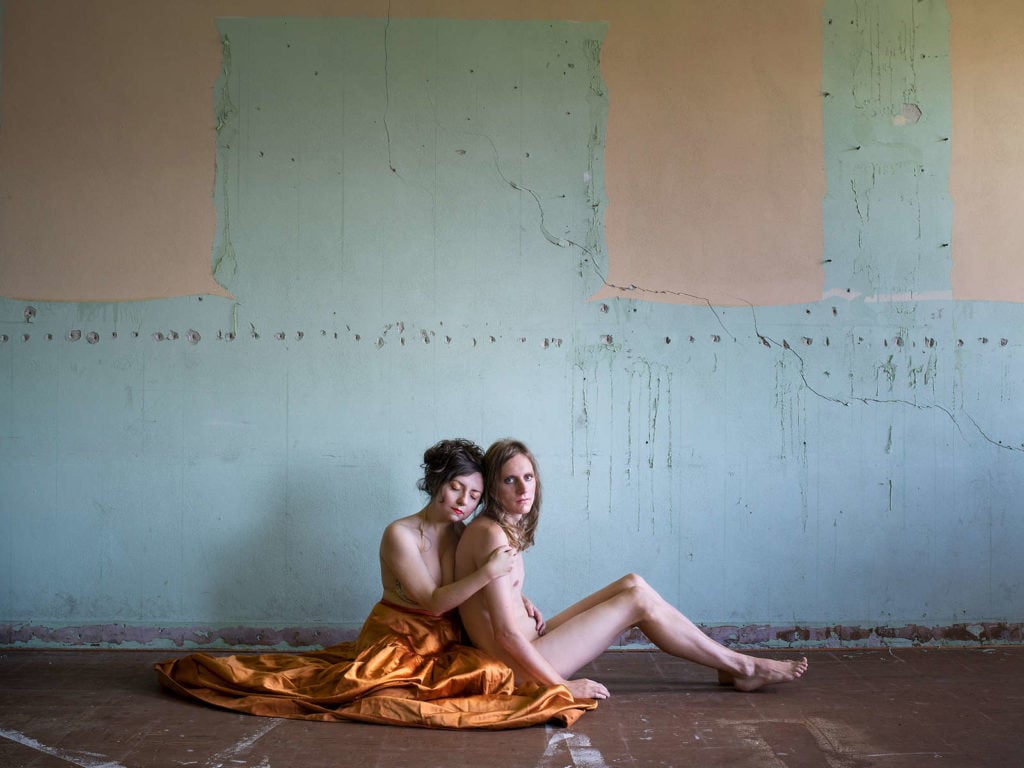
The world's oldest photography fair is back in New York.

Sarah Cascone &
Taylor Dafoe

Look alert, photo-fans. The Photography Show, presented by the Association of International Photography Dealers, is back at Pier 94 in New York this week, bringing with it more than 90 galleries, 30 book publishers, 12 special talks, and thousands of works by artists both living and dead. If you’re looking to add to your collection or populate your coffee table with a few new photo books, this is the place to be.
This year marks the 39th edition of the event—the longest run of any photography fair. Indeed, it’s an impressive feat, even if at times the show feels as old as it is. Sure, sometimes dealers trot out the same stuff that was on display last year, and even the year before that. But every art fair is going to have collector catnip—the Annie Leibowitz rockstar outtakes, say, or the secondary-market Walker Evans prints—and there’s always plenty of great new work to be found if you know where to look. Fortunately for you, we did our homework.
Below, see a list of the best contemporary artists on view, and where exactly you can find them.
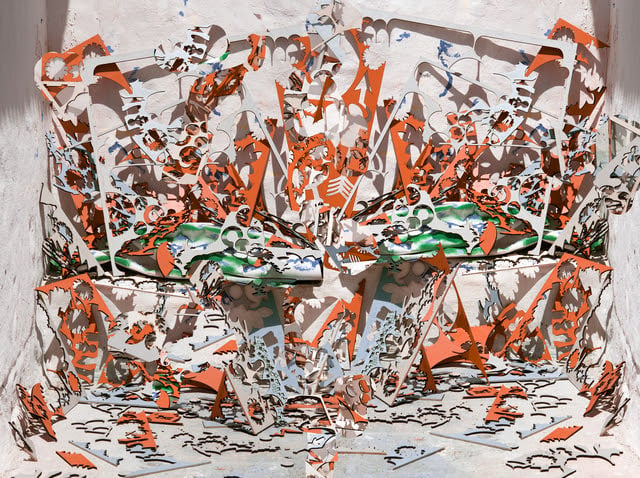
Nico Krijno, Composition with painted cutouts (2018). Courtesy of Elizabeth Houston Gallery.
South African-based artist Nico Krijno creates ad-hoc sculptures out of everyday objects, photographs them, then digitally samples his subjects to create complex pictures that leave the viewer wondering what’s “real” and what isn’t. For instance, in one of the standout works on view at Elizabeth Houston’s booth, Composition with Painted Cutouts (2018), dozens of broken, painted stencil scraps—both photographed and Photoshopped—lay splayed across the picture plane. The arrangement is so dense that from a distance, the whole thing looks like an abstract painting. Krinjo seems to be part of the “Photography is Magic” school—a group of young artists who exploit modern tools to push the limits of representation.
Composition with Painted Cutouts and other photographs, priced between $2,000 and $6,000, will be included in “Leave Your Body Behind,” a forthcoming solo show of Krijno’s work going to Houston’s gallery. It’s the artist’s first exhibition in the United States.
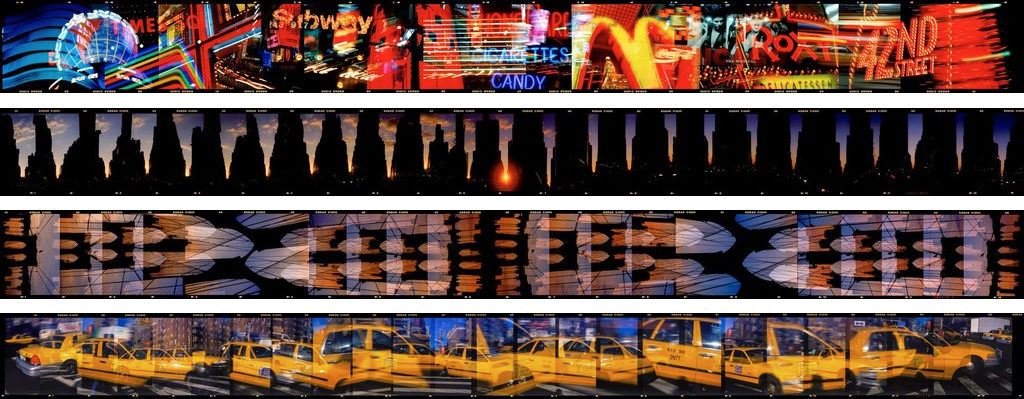
William Furniss, Neon Times Square 2000), Manhattan Sunset (1999), Brooklyn Bridge (1999), and New York Taxi (1999). Photo courtesy of Van Rensburg Galleries.
William Furniss’s trippy views of New York City date between 1999 and 2018, but it took a Hong Kong gallery for them to be exhibited in New York for the first time. The works on view include contact sheet-based compositions that use multiple photos taken from different angles to convey a single subject—vaguely reminiscent of more orderly David Hockney photo collages—and multiple exposure images created by manually rewinding the roll of film to create an extended, almost hallucinatory overlapping view of familiar city sites such as the Brooklyn Bridge.
Each composition is layered with exact precision, with using trial and error to achieve the desired result. “He takes a lot of notes, calculates it all, and then he develops it, sees where it went wrong, and tries again,” a gallery representative told artnet News, pointing to a neon strip of Times Square signs that took ten tries to get just right.
One highlight, Manhattan Sunset, of the setting sun aligning perfectly with the city’s street grid, was shot in 1999—two years before astrophysicist Neil deGrasse Tyson helped popularize the phenomena by coining the term Manhattanhenge. Prices range from $1,050 to $4,200.
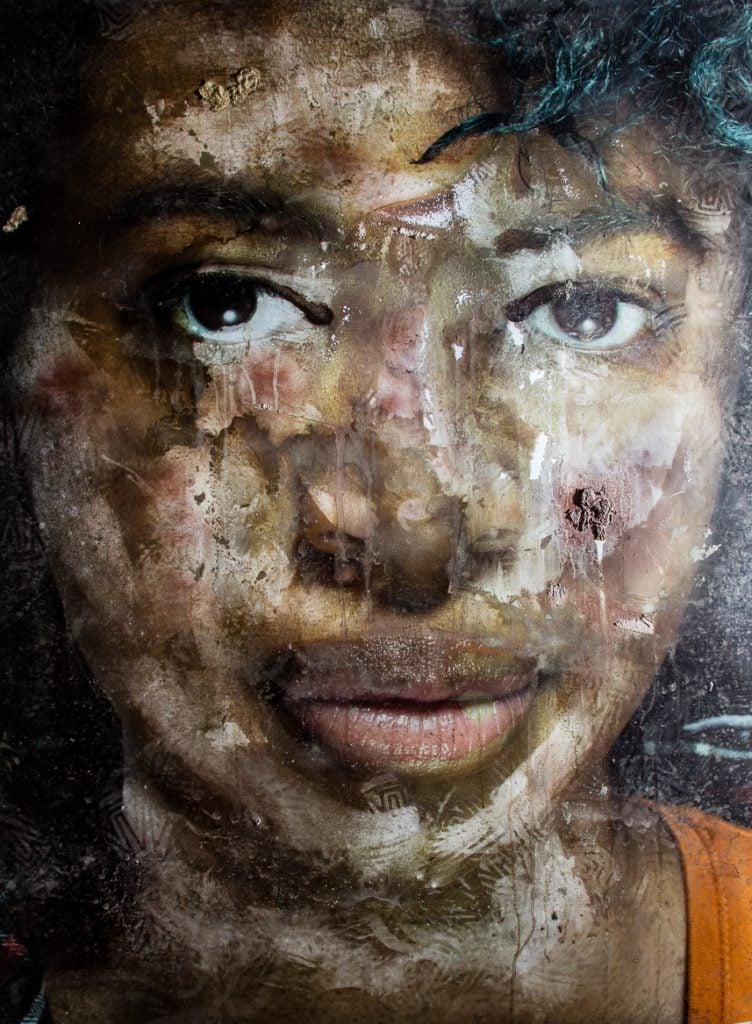
Ervin A. Johnson, Sherelle (2015). Photo courtesy of Arnika Dawkins Gallery.
Made in response to the Black Lives Matter movement and the incidents of police brutality that (literally) triggered it, Ervin A. Johnson’s series #InHonor is made of large-scale printed photos of young black youth coated in paint, mud, footprints, and other substances. Three of these 54-inch-tall unique works stare out at the AIPAD crowd from the booth of Atlanta-based gallerist Arnika Dawkins.
“He’s interested in negotiating the idea of pigment,” says Dawkins, referring to both skin tone and the paint on the surface of the works. “I think they’re a portrait of Ervin as well, how he was feeling at that time, trying to come to terms with what it means to be black.” The unique works are each priced at $6,500.
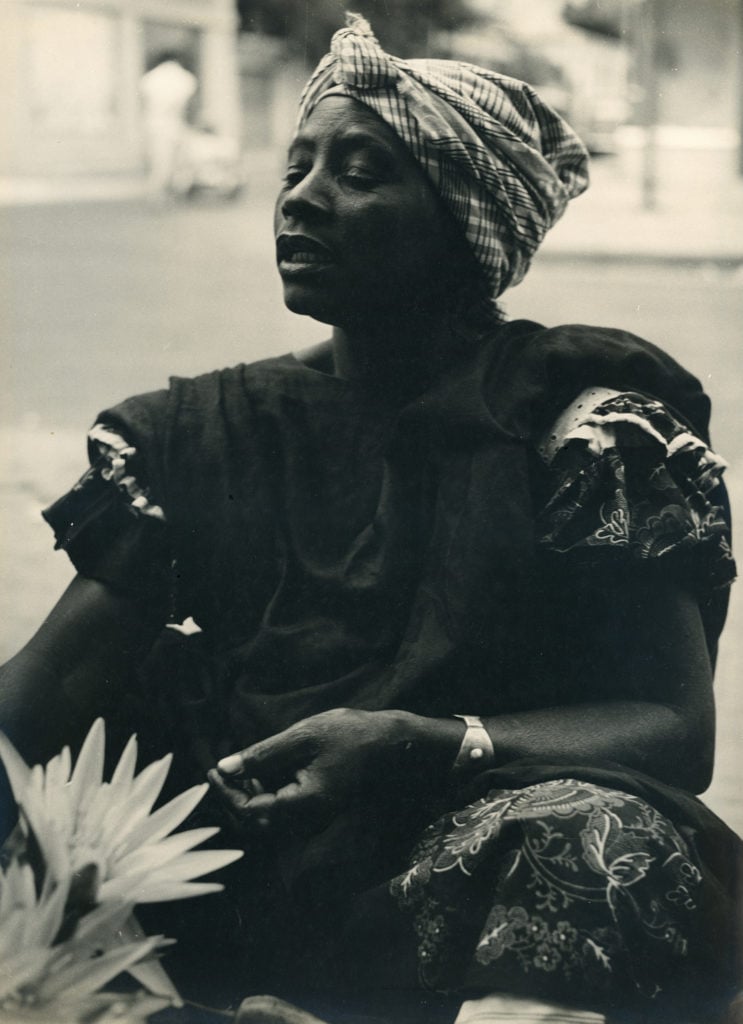
Palmira Puig-Giró, Vendedora de flores (circa 1950). Photo courtesy of RocioSantaCruz.
When Spanish photographer Marcel Giró died in 2011, he left his life’s work and personal archives to his nephew, Toni Ricart Giró, who began working with Barcelona’s RocioSantaCruz gallery to tend to his uncle’s legacy. But amid boxes of photos, contact sheets, and negatives, the gallery soon realized that they had the work of two artists, not just one.
Giró’s wife, Palmira Puig-Giró, who died of cancer in 1978, was also an accomplished photographer, joining her husband as a member of Brazil’s influential experimental photography group the Foto Cine Clube Bandeirante.
But back in their native Spain, “no one knew that she was a photographer,” gallery owner Rocio Santa Cruz told artnet News. Determining which photographs were by which photographer required some detective work. But luckily, some of the contact sheets contained images with Giró in the background, making it clear that Puig-Giró was the one holding the camera, making these pictures quite different from his architectural abstractions and natural landscapes.
On view for the first time in New York, Puig-Giró’s prints are priced $12,000 to $16,000.
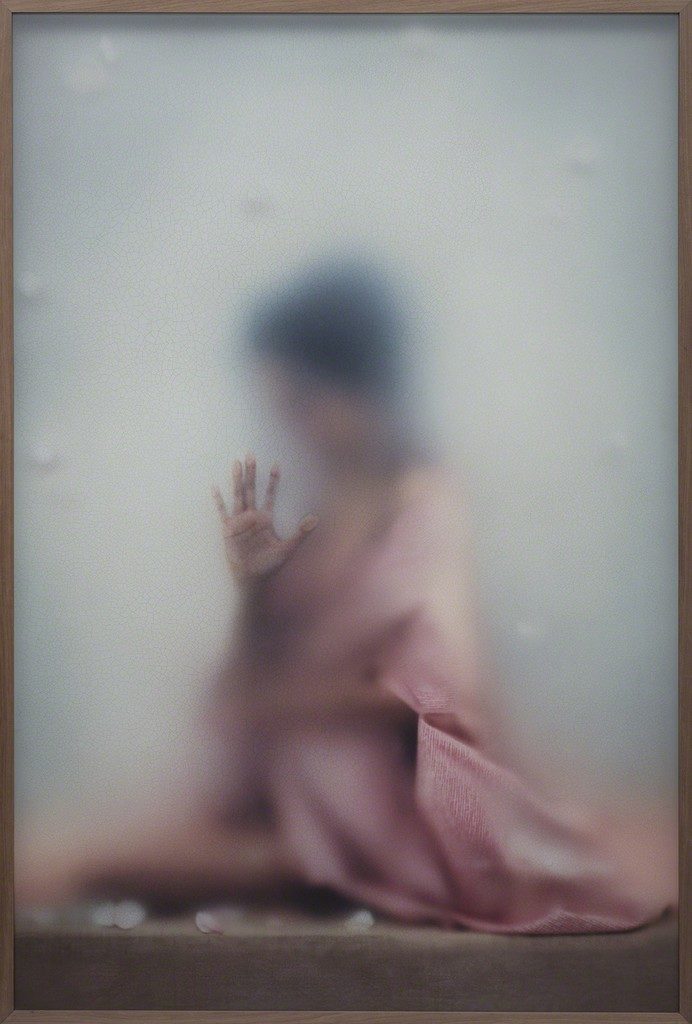
Casper Faassen, Yuka (2019). Photo courtesy of Ibasho Gallery.
A painter by training, Casper Faassen subtly layers his photography prints with oil and acrylic paints, blending the two media to expert effect. When he shoots, Faassen places his subjects behind a sheet of setasand, a frosted sheet of acrylic. He then prints the resulting image on the same translucent matte material, creating a ghostly, just out-of-focus image.
“It’s not depth of field that creates the blurriness, it’s the actual material,” Faassen told artnet News. To create areas where the photo is opaque, the artist paints on the back of the work; on the front he adds a layer of clear oil paint. Each work has a gorgeous patina that Faassen likens to the Japanese art of kintsugi, in which broken pottery is repaired by filling the cracks with gold-dusted lacquer. (His smaller photographs depict Japanese ceramic vessels.)
Available here for the first time in New York, Faassen’s prints are priced from $4,250 to $8,500.
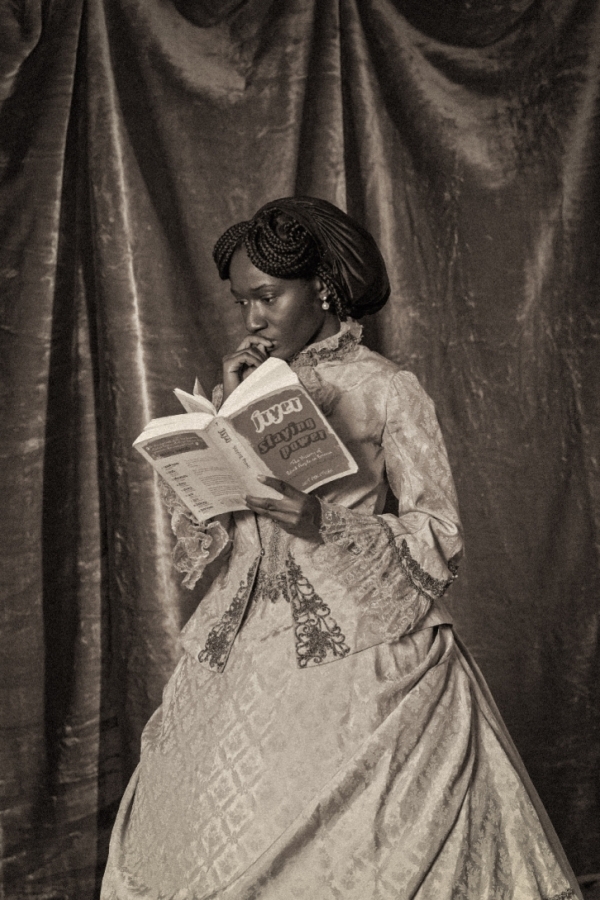
Heather Agyepong, Too Many Blackamoors. Photo courtesy of James Hyman Fine Art and Photographs.
In “Too Many Blackamoors,” a series of striking self portraits, Heather Agyepong taps into her own encounters with racism in Europe as she recreates the poses from a 19th century carte-de-visit depicting Sarah Forbes Bonetta.
“Lady Sarah Forbes Bonetta was from West Africa. She was kidnapped, sold into slavery, and wound up in the court of Queen Victoria, where she was adopted,” Claire Hyman of James Hyman Fine Art and Photographs told artnet News. Agyepong’s photos are “about her own gender, identity, and race, but based on this historical person.”
The artist has printed seven sets of nine photographs priced at $18,000 each. One set of pictures is broken up, and each work is being sold individually at $2,200 each.
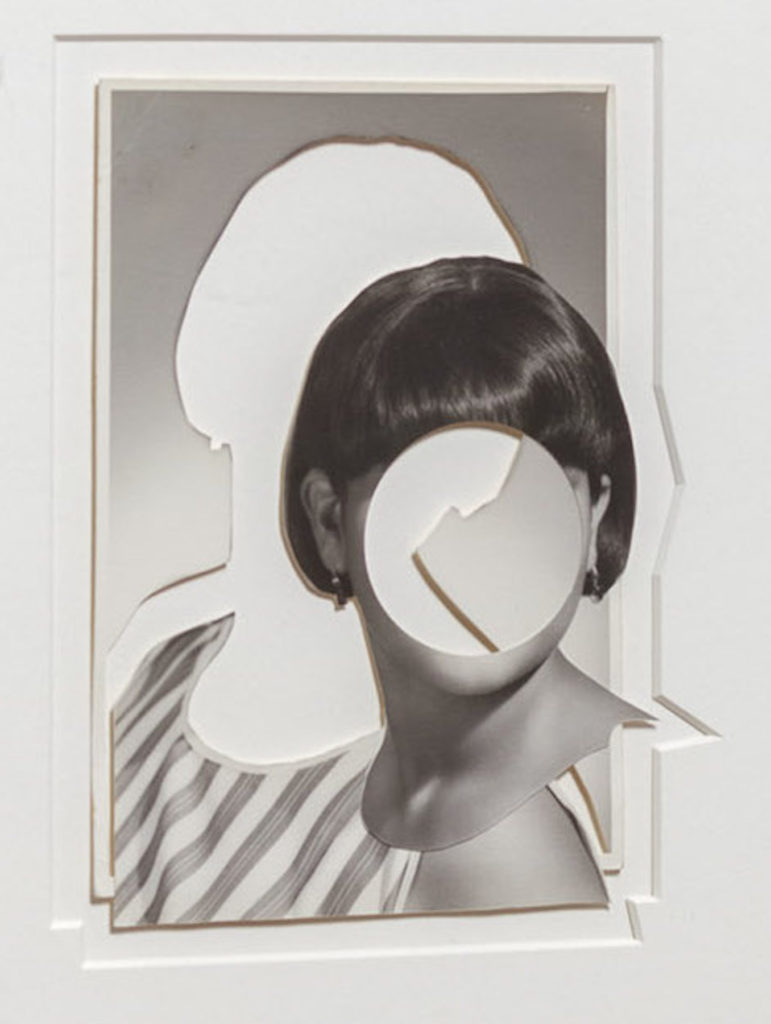
Alejandro Cartagena, Discuartizados #32 (2019). Photo courtesy of Kopeikin, Los Angeles.
Paul Kopeikin wasn’t originally planning to show at AIPAD, but when March’s VOLTA New York was abruptly cancelled less than two weeks before its opening, artist Alejandro Cartagena had already shipped the new work he had created for the fair from Mexico City. Based on vintage photographs that he cuts up, removing faces and human figures to create ghostly new compositions, the work was a natural fit for the Photography Show.
Luckily, the gallery was able to get a booth, where a grid of Cartagena’s 20 unique vintage cut out prints is available for $50,000. “Alejandro started out as an archivist,” Kopeikin told artnet News, noting that it’s easier to come by old photographs in Mexico than in New York, where “things are pretty picked over.”
The resulting images are powerful in the absence of human figures, alluding to the tens of thousands of Mexican citizens who have vanished in recent years. “In the end,” writes Cartagena in his artist statement, “it seems anyone can disappear, and no one will ever give us answers.”
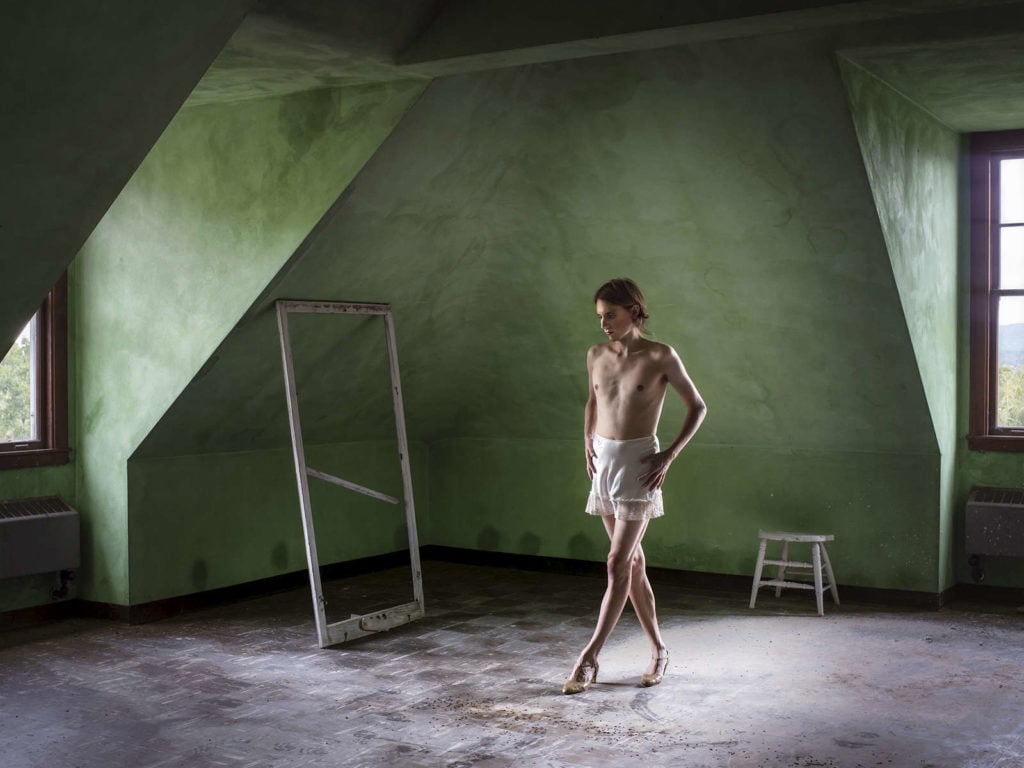
Lissa Rivera, Attic Dormitory (Walking)(2019). Courtesy of the artist and ClampArt.
Following her acclaimed Beautiful Boy series from 2017, Lissa Rivera’s new body of work again finds the New York-based photographer training her lens on her partner, BJ Lillis. The project, making its debut at one of ClampArt’s AIPAD booths, features stark, somber portraits of Lillis in an abandoned building that has been used, at different times, as a male-only Catholic seminary, a junior high school, an “alternative medicine resort,” and, according to Rivera’s own description, the home of an “evangelical ministry dedicated to promoting sexual purity for adolescent girls.”
“The Silence of Spaces is a personal reckoning with the inescapable connections between religious faith, gender, and the body,” Rivera writes in a statement. The works are priced at between $2,600 and $4,000.